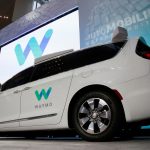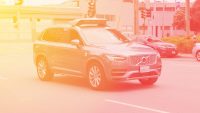with a purpose to Come First: the tip Of Uber’s Labor Lawsuit Or Self-riding vehicles?
by the time a category-motion misclassification lawsuit in California reaches an end result, Uber would possibly now not have drivers to reclassify.
October 14, 2015
the class-action lawsuit Uber is facing in California, which claims the company misclassified its drivers as unbiased contractors, threatens the core of its business variation. If Uber have been to rent its drivers as employees, it will be responsible for paying into Social safety, Medicare, unemployment insurance, and employees compensation insurance coverage on their behalf, and it could lose some of its flexibility to amplify and contract its team of workers to satisfy demand. A recent serviette estimate from Fortune guessed that it might value the corporate an additional $four.1 billion per 12 months to switch all of its drivers from contractors to workers. (though the current case applies most effective to California, it can be instructive in different states.)
along with Uber, the decision could impact the viability of corporations like Postmates, Lyft, and different gig-economy companies that supply products and services by using dishing out jobs, gig by way of gig, to an army of freelancers. As an Uber legal professional not too long ago put it in a court docket submitting, this is “the best case raising urgent questions about the classification of sharing-economy staff.”
Self-riding cars wouldn’t scale back damages if Uber have been to lose the case. however the threat to Uber’s adaptation would be a lot much less threatening if it were no longer relying on labor. that would occur more quickly than you’ll assume. last week, Toyota joined Nissan, normal Motors, and Google in estimating that it will have self-using automobiles on the street via 2020. Elon Musk, whose firm Tesla can also be engaged on self-riding cars, estimated last week that we’d be handing over the wheel to a pc inside the next two or three years.
meanwhile, the class-motion lawsuit towards Uber, filed in 2013, has two years later just been granted classification certification on the plaintiffs’ declare that Uber failed to move on tips to drivers. It denied category certification on the plaintiffs’ different claim, however gave them the opportunity to file a supplemental transient on that declare, and even the class certification it did furnish might still trade—more on that later.
The relative pace of self-driving automobile expertise—which at Google, has already been examined for 1 million miles—and the infamous slowness of court court cases made me surprise: Can Uber simply wait this out? Is there any likelihood that by the time a conclusion is in reality reached, Uber will have already got self-using vehicles on the highway?
in the beginning, this idea was once a funny story. Then I began to talk with labor lawyers.
How lengthy for a decision within the Uber misclassification case? “i think you’re having a look at years,” says Gail Gottehrer, a labor and employment litigator at Axinn Veltrop & Harkrider, whose apply focuses on class action safety, privateness and technology litigation, and digital administrative center-associated actions.
right here’s what would need to happen earlier than Uber would be compelled to pay its drivers must a class-motion lawsuit come to a decision they were employees:
In September, a federal judge granted one declare within the lawsuit, that Uber failed to cross on tips to drivers, type standing. Uber filed for permission to enchantment that call (typically it will wait except after the completion of the case to attraction the class certification resolution). If Uber loses the proper to appeal the class certification, it won’t be able to attraction the decision except your entire case is concluded. “a decision on an enchantment filed after a jury verdict in the case could take as much as two years,” says Gottehrer.
If Uber wins the proper to attraction the decision about type action, the attraction of the choice certifying the information declare will proceed in that court docket, which might take between six months and a yr. If Uber loses the appeal, the case will go back to the district courtroom, the place the trial will take place. Whichever method the court decides, there is generally some other appeals process.
So, 2020? It’s now not necessarily seemingly that the decision would take that long, but it surely wouldn’t be a total stretch. “I don’t see it going until 2020,” says Diane Wagner Katzen of Richman Greer. “however you never understand what happens.”
reckoning on a sluggish judicial process is not the only method to postpone a payout. Uber may additionally settle with the drivers, as a category. “What ordinarily happens is that the events come to a agreement agreement, agree on a category, and to make it as large as that you can imagine, in order that it includes as many people as conceivable, so an organization can maintain the problem,” says Larry A. Kellogg, a accomplice at Levine Kellogg Lehman Schneider + Grossman who specializes in category-action litigation on both the safety and plaintiffs’ facet.
A contract would additionally avoid a court docket resolution, which is important, as a result of although it could handiest follow to California, it could be persuasive in misclassification proceedings in every single place. “The 9th circuit is an extraordinarily influential, revered judicial physique,” Katzen says. “And so naturally, other courts shall be citing any determination with the aid of this courtroom.”
“If you want my prediction,” Kellog says, “it’ll be resolved with the aid of settlement.”
but as Uber ramps up its efforts round self-driving vehicles—it just lately opened a massive analysis middle in Pittsburgh and announced a partnership with the college of Arizona with hopes of developing better technology—there’s some chance that know-how may unravel the controversy about how to classify future employees first.
(79)














